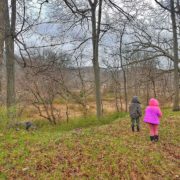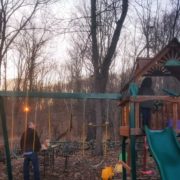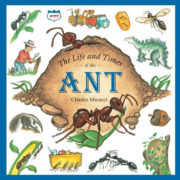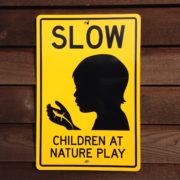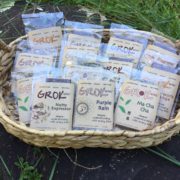
Photograph Courtesy of family+footprints.
Much of the Forest School For All style of forest play in unstructured. We love the power of child-led exploration and free play in an open environment. But there is something equally powerful about semi-structured outdoor experiences, ones that involve activities such as physical challenges, creative prompts and survival skills.
Let's talk more about these types of activities and how we as parents and facilitators can offer them to children as an open invitation to explore, while still having our children feel empowered in the process.
Semi-Structured Outdoor Experiences
There are a variety of ways to engage in the outdoors, from free play to a fully structured experiences. Somewhere along that spectrum you'll find semi-structured activities. With nature as an interactive setting, these types of activities incorporate the outdoors in a loosely guided way, which diversify the benefits children get from their time outside. Naturally, you may find that children in their free play are already doing some of these activities to a degree. When you deepen the learning, provide materials and guide more of the experience, it moves the activity fully into a semi-structured experience.
Creative Prompts
This is where your Pinterest boards can come alive. Have ideas for arts and crafts using natural materials? Do you want to conduct science experiments with the outdoors as your lab? By providing materials and talking about ways in which they work together, these types of prompts can open up a whole new world of learning for your child. And with a focus on process, rather than product, they can also be ripe for building your child's creativity.
Challenge Courses (Nature's Own + Otherwise)
Adventurous families may already be familiar with local, outdoor challenges. You have nature's own built in adventures, along with man-made courses to cover active sports, zip lines, low and high rope courses - the list goes on and on. On the surface, these experiences can seem like a thrill, but at their core, these are challenges - physically and emotionally. They push us out of our comfort zones and they invite us to work together as a team. By tuning into your child's and family's goals - which may look different for everyone - this can be uplifting, unifying and confidence-boosting.

Photograph Courtesy of family+footprints.
Survival Skills
Learning to forage, starting a camp-fire, building a tent structure, practicing first-aid in the wilderness - there are endless ways to learn how to live off the land when spending time on the land. These activities can feel dangerous at time, but risky activities can be done safely. And survival skills are in and of themselves very valuable. Beyond simply having this knowledge, taking on skills can increase our child's resourcefulness, independence and confidence.
Ways We Empower Children
As a challenge for adults, there are ways in which we can present these semi-structured experiences as empowering for children - not just in their premise, but in their practice as well. Imagine how a child's experience changes when we do some of the following:
Making Choices Together
You'll feel the full power of these activities when everyone is on board and ready for the experience. Are your children interested in doing the activity you have planned for the day? If they're game for anything, great. Prepare them for what the adventure holds and the opportunities for them to take a lead. If they aren't feeling it, try to figure out why. You can always save an experience for another day or adjust it to make sure everyone is fully comfortable.
Process Rather than Product
Some of most amazing things can occur when we focus on the process - the discovery and challenge phase - rather than the product or the outcome. When we present an opportunity and then let a child navigate through it, of course it might not look or go the way you expect, but focus on what your child is getting out of the experience. Often, they are stretching their creativity, they're learning by doing it on their own and they're challenging themselves in subtle - or visible - ways that build over time.

Photograph Courtesy of family+footprints.
Open Invitation
Sometimes we set up these activities or experiences and it feels like it just isn't a match for our child. They look at it and head off in another direction. Try playing out that string. If you leave a prompt out for a long time, do they eventually come back to it? In their free play are they taking your idea and running with it in their own direction? Leave the prompt out for days and see if it sparks something completely different now that you've lived life and thought about it passively for awhile.
With nature as an interactive classroom, there are many ways to incorporate activities in our outings. And with a focus on empowering children to take just as much of lead - albeit a slightly different one - as they do in free play, they have much to gain and much to inspire in others.
How else do YOU incorporate empowering activities in your outdoor play?
Related Posts
5 Benefits of an Outdoor Play Community
Get Our Free Guide
Sign up for our newsletter and receive Forest School For All's free guide, Outdoor Play: Top 10 Tips for Unstructured, Free Play.






